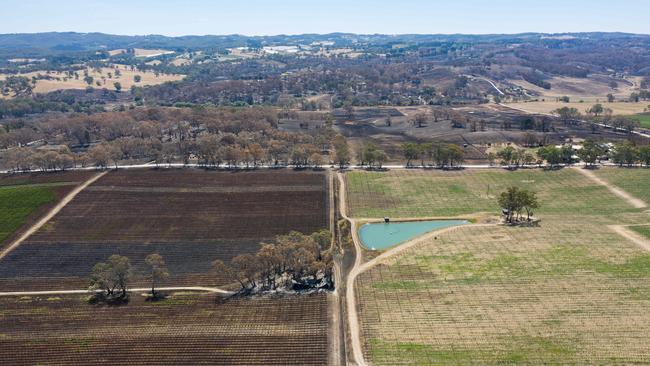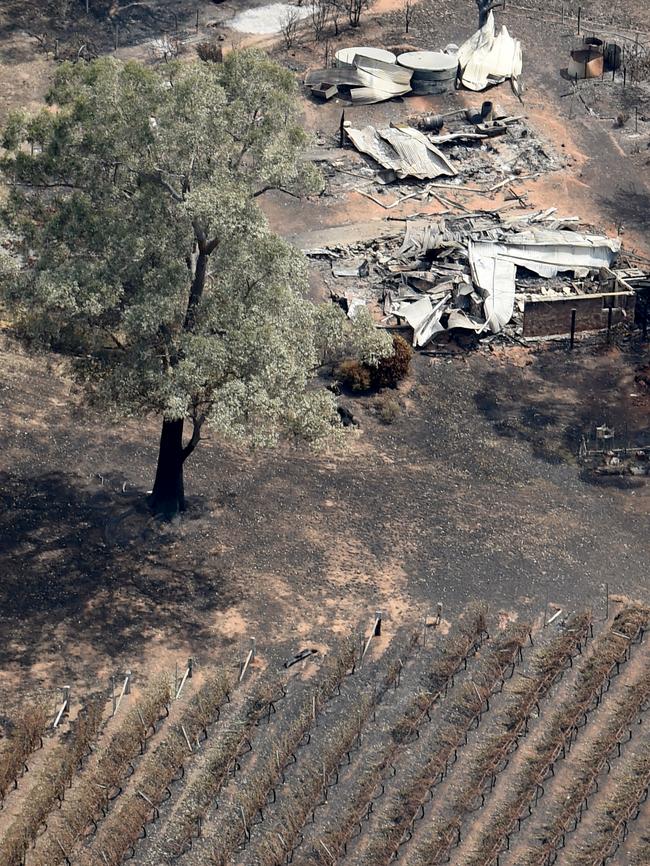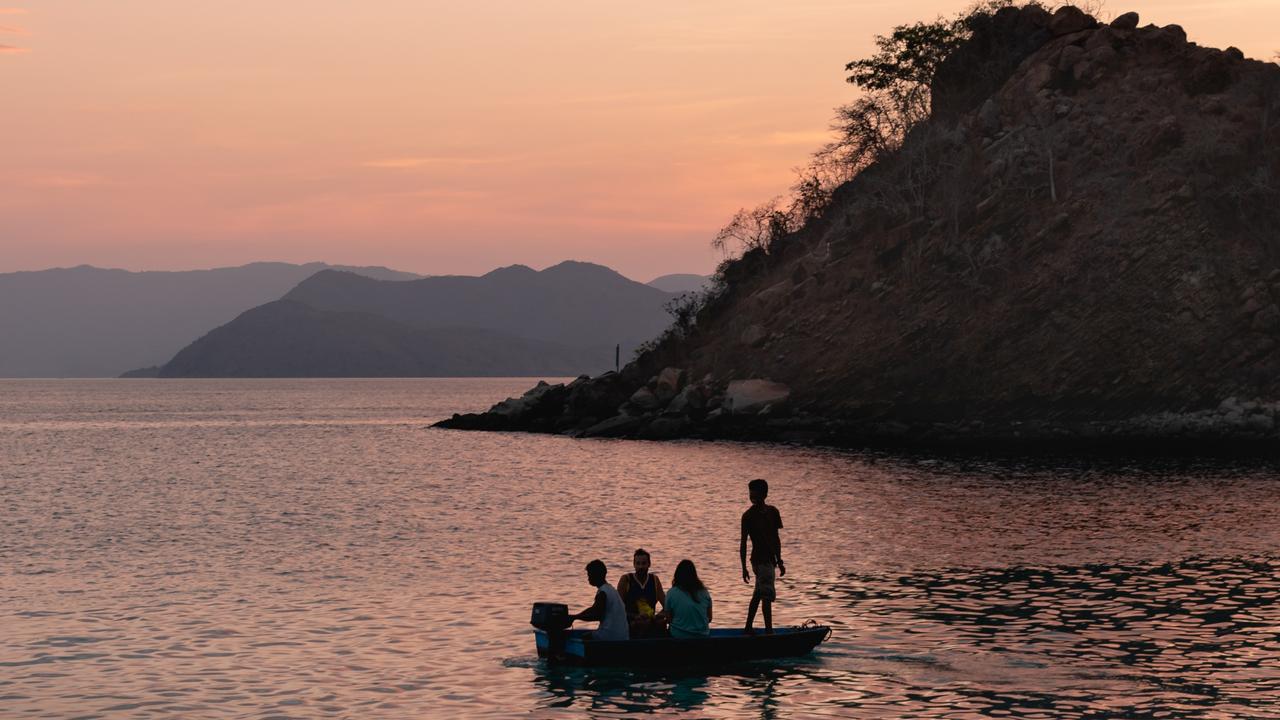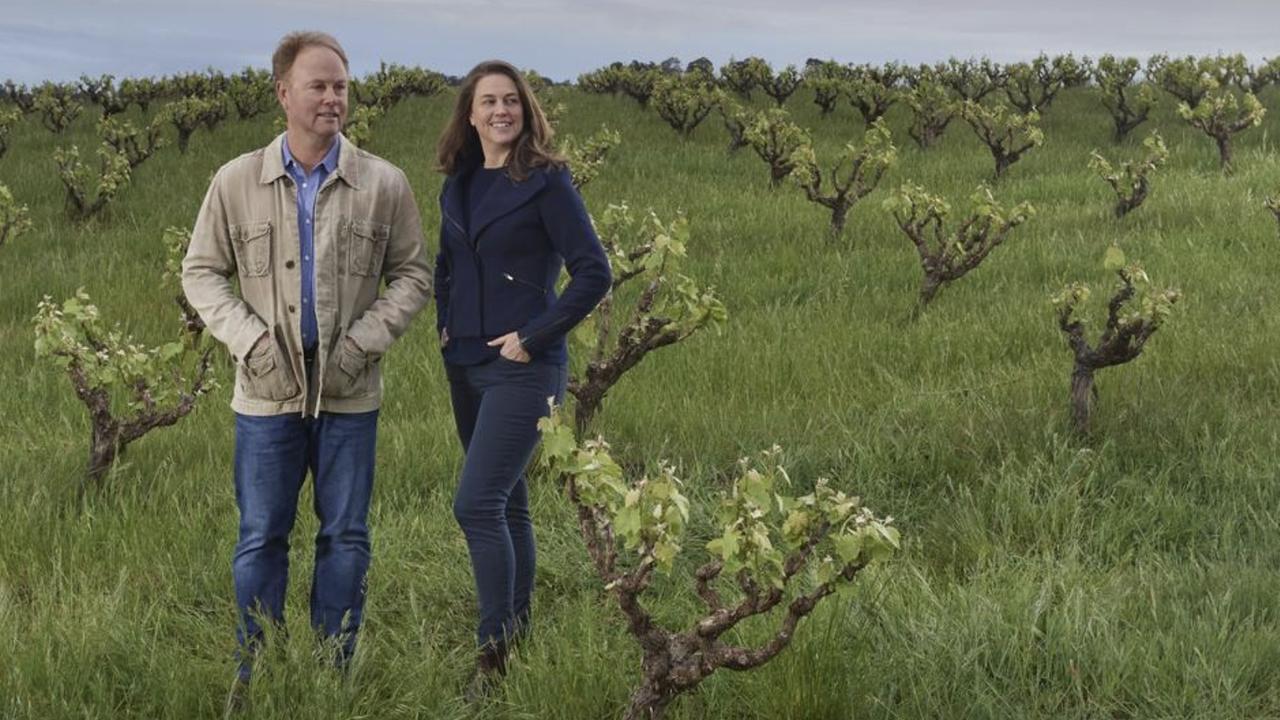Growing resolve of winemakers after bushfires in South Australia
Like a lot of people in the Adelaide Hills, grape grower Michael Bowe was uneasy on the morning of December 20.

Like a lot of people in the Adelaide Hills, grape grower Michael Bowe was uneasy on the morning of December 20. A catastrophic fire danger warning is meant to focus the mind like this.
Around 10am on that Friday an alert for a fire at Cudlee Creek popped up on the Country Fire Service website.
Cudlee Creek is a little more than 10km north of the 20ha vineyard at Woodside run by Bowe, his wife, Ann Lees, and viticulturist Adam Loveys, that is also the site of the family home.
Within the hour news arrived that the fire had jumped Fox Creek Road and was moving towards the towns of Lobethal and Woodside.
Police were gathering at the intersection closest to his house. As he went to investigate, an agitated man, covered in soot and ash, arrived from the Neudorf Valley, just north of nearby Lobethal.
He revealed the fire had swept through Neudorf, was bearing down on Lobethal and would be in Woodside soon.
The intersection started to jam with traffic fleeing Lobethal.
“It was this flood of people coming from Lobethal,” Bowe recalls. “And then the fire was on us. So fast. So incredibly fast.”
The flames came at Bowe’s house from three sides. He fought on one side, his wife on another and their 18-year-old daughter on the third.
They saved the house, but the vineyard — one of the best in the Hills — was lost, along with the shedding and infrastructure supporting it.

The Cudlee Creek fire burned more than 24,000ha of the Adelaide Hills, within which lay the vineyard and winery assets of more than 60 grapegrowers and winemakers.
In the outpouring of charitable concern following the fires, campaigns have been devised to buy wines directly from affected winemakers, the success of which has provided a useful injection of cash for some.
But for growers such as Bowe and Lees, whose labours end up in the bottles of others, there is no wine to sell for a short-term fix, no brand that well-meaning winos can seek out on the bottle shop. What Bowe had to sell went up in flames on December 20.
When he reels off the different varieties now lost, you can tell Bowe is a grower with greater goals than just cashflow.
The vineyard sensibly grew the region’s most commercial crop, sauvignon blanc, and its best performing, chardonnay, but also a selection of varieties that speak to an ambitious and inquiring mind, such as tannat, arneis and petit manseng.
There was nebbiolo, the one variety that indicates the grower is bedevilled by the twin demons of quixotism and masochism, and Bowe seems particularly saddened by the loss of young plantings of the obscure grenache gris that were yet to see a first crop.
Twenty-three winemakers were queued up to take the highly sought after fruit this coming vintage. How they will deal with hole that leaves in their vintage plans remains to be seen.
There’s a daunting amount of work ahead to re-establish what has been lost.
Posts and trellis wires are destroyed, and irrigation lines burned like fuses down rows. The vines themselves, if still alive, will need to be cut back hard, the worst affected in a row dictating the level the rest will need to be cut in preparation for regrowth.
All the machinery required for such work went up in the fire.
Bowe says the best advice he’d received since the fire was not to make any rash decisions, so he can’t properly answer my question about his plans to rebuild.
“If this had happened 30 years ago, I might have seen it as an opportunity, a chance to change things up,” he says.
“Now, I’m not so sure.”
At 64, and having wrestled cancer in recent years, that answer seems entirely reasonable.
But as the conversation goes on, as we swap enthusiasm for nebbiolo, as we talk of the untapped potential of grenache gris, and as he praises the talents of winemakers who work with his fruit, such as Michael Corbett and Colin McBryde, the enthusiasm in his voice rises, its tone changing from one that says “if” to one that says “when”.
There are many other growers in the same situation, nearly 50 in the area affected by the Cudlee Creek fire, who will take several years to recover from this event.
It’s important not only for the Adelaide Hills but for Australian wine as a whole for green shoots to emerge from these ashes.
Here’s hoping they do.
A brief note on how to help.
The true extent of vineyard damage in the Adelaide Hills won’t be known for months but in the meantime funds are being collected for eventual distribution when needs are properly understood. Details here.
Many fundraising dinners and events will be held around the country. This column is happy to be involved in a series of unique events curated by Adelaide chef Duncan Welgemoed, details of which can be found here.
But best of all, go and visit. It really is a magical place.


